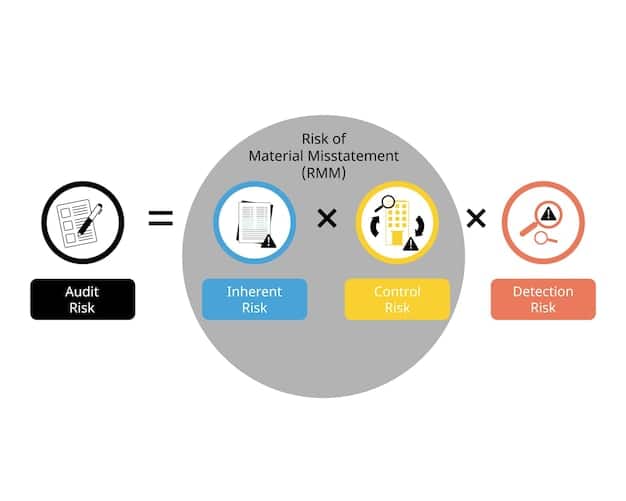2025 ADA Website Guidelines: CX Impact Explained

The updated 2025 ADA website accessibility guidelines will profoundly impact customer experience by necessitating inclusive digital design, fostering broader engagement, and potentially enhancing brand loyalty through proactive adherence to accessibility standards, thereby mitigating legal risks and expanding market reach.
In an increasingly digital world, the accessibility of online platforms is no longer merely an ethical consideration but a legal imperative. The upcoming updated 2025 ADA Website Accessibility Guidelines are set to redefine how businesses interact with their customers online, fundamentally reshaping the customer experience landscape. Businesses ignoring new mandates, risk alienating a significant portion of their audience and facing substantial legal challenges.
Understanding the Foundation: What the ADA Website Guidelines Entail
The Americans with Disabilities Act (ADA), enacted in 1990, prohibits discrimination based on disability. While initially focused on physical spaces, its principles have expanded to the digital realm. The 2025 updates aim to clarify and strengthen these obligations for websites and mobile applications, ensuring that individuals with disabilities have equal access to online goods, services, and information. These guidelines are not just about compliance; they are about fostering a truly inclusive digital environment.
For too long, interpretations of ADA applicability to websites have varied, leading to a patchwork of approaches and often significant legal disputes. The 2025 guidelines seek to standardize expectations, likely referencing or adopting updated versions of the Web Content Accessibility Guidelines (WCAG), specifically WCAG 2.2, as the benchmark for digital accessibility. This move provides much-needed clarity for businesses, outlining concrete technical standards that must be met to avoid discrimination against users with visual, auditory, cognitive, and physical impairments.
The Shift from Ambiguity to Specificity
Historically, the lack of explicit rules for website accessibility under the ADA left businesses vulnerable to lawsuits and ambiguity regarding their responsibilities. The new guidelines are expected to bridge this gap, offering clearer directives on what constitutes an accessible website. This shift from vague interpretations to specific technical requirements is a game-changer for digital operations.
- Clearer Technical Standards: Businesses will have a definitive framework, likely based on WCAG 2.2, to guide their website development and remediation efforts, offering practical steps for achieving compliance.
- Reduced Legal Uncertainty: With established benchmarks, companies can proactively address accessibility issues with greater confidence, reducing the risk of demand letters and costly litigation.
- Enhanced User Experience for All: Guidelines will enforce features like improved keyboard navigation, better color contrast, and descriptive alternative text for images, benefiting not just users with disabilities but everyone.
The commitment to these updated guidelines signifies a broader societal recognition of digital equity as a fundamental right. It underscores that the online world should be as accessible as the physical one. Businesses that embrace these changes early will not only comply with the law but also gain a competitive advantage by reaching a wider audience and enhancing their brand reputation.
In essence, the 2025 ADA website accessibility guidelines are a critical evolution, providing the clarity and direction needed for businesses to create truly inclusive digital experiences. This foundational understanding is crucial for any organization looking to thrive in the modern online landscape, laying the groundwork for positive customer experiences rooted in accessibility.
Direct Impact on Customer Experience: Beyond Compliance
The immediate reaction to new mandates, particularly those with legal teeth, often focuses on compliance and avoiding penalties. However, for the updated 2025 ADA website accessibility guidelines, the true impact on customer experience (CX) extends far beyond merely ticking regulatory boxes. These guidelines provide a potent opportunity to fundamentally enhance how customers interact with your brand online, transforming potential barriers into pathways of engagement and loyalty.
When a website is designed with accessibility at its core, it inherently becomes more user-friendly for a broader spectrum of people. Features that benefit users with disabilities—such as clear navigation, robust keyboard support, accessible forms, and understandable language—also improve the experience for able-bodied users. Think of closed captions: originally for the hearing impaired, they are now widely used in noisy environments or when watching content silently. This principle of universal design ensures that investments in accessibility yield dividends across your entire customer base.
Broadening Your Customer Reach and Engagement
An accessible website opens your digital doors to millions of individuals who might otherwise be excluded. This includes people with permanent disabilities, temporary limitations (e.g., a broken arm), or even situational barriers (e.g., bright sunlight making a low-contrast site unusable). By catering to these diverse needs, you significantly expand your potential customer base and enhance engagement.
- Increased Market Share: Tapping into the spending power of individuals with disabilities and their families, a demographic often overlooked by inaccessible platforms.
- Improved SEO: Many accessibility best practices, such as well-structured headings, proper alt text for images, and clear content hierarchies, directly align with SEO best practices, boosting your search engine rankings naturally.
- Enhanced Brand Image: Brands perceived as inclusive and socially responsible often attract a more loyal customer base and positive public sentiment.
Consider the frustration a customer experiences when they cannot complete a purchase, find information, or use a service due to an inaccessible website. This negative experience not only leads to lost business but also generates negative word-of-mouth. Conversely, a smooth, accessible digital journey fosters satisfaction, trust, and a willingness to return. This is the essence of a positive customer experience – frictionless and empowering interactions.
The updated ADA guidelines compel businesses to re-evaluate their digital strategies not just from a technical standpoint but from a human-centered perspective. By prioritizing accessibility, companies are inadvertently prioritizing a superior customer experience for everyone, making their platforms more intuitive, reliable, and enjoyable to use. This holistic approach ensures that digital interactions are not just compliant, but genuinely enriching for all users, solidifying customer relationships in the long run.
Key Technical Changes and Their CX Implications
The 2025 ADA website accessibility guidelines are expected to introduce more granular technical requirements, likely aligning with WCAG 2.2. These changes will not only demand technical adjustments but will also have direct and measurable consequences for the customer experience. Understanding these specific technical shifts is crucial for proactively addressing compliance and enhancing user satisfaction.
For instance, one major area of focus will likely be on enhanced navigation and input methods. Many users with disabilities rely on alternative input devices or screen readers. This means websites must be fully navigable and functional using only a keyboard, and all interactive elements must be properly labeled and semantic for assistive technologies. This shift moves beyond basic “readable” content to fully “operable” interfaces for everyone.
Specific WCAG 2.2 Additions and Their CX Benefits
WCAG 2.2 introduced several new success criteria that, if adopted by the ADA, will significantly raise the bar for digital accessibility.
- Accessible Authentication: This criterion ensures that the login process does not rely solely on cognitive function tests, providing more adaptable and secure authentication methods for all users. This enhances user security and reduces frustration during critical access points.
- Target Size (Minimum): Interactive elements (buttons, links, form fields) must be large enough to be easily activated, benefiting users with motor impairments, but also those using touchscreens or imprecise input devices. Fewer accidental clicks mean a smoother, more efficient interaction.
- Consistent Help: Websites should offer help in the same relative location on different pages, reducing cognitive load and the need for users to relearn where to find assistance. This creates a more intuitive and less stressful user journey.

The implications for CX are profound. Imagine a user with limited dexterity trying to click a tiny button on a mobile screen, or a cognitively impaired user struggling with inconsistent help menus. These seemingly small technical details can create significant roadblocks to completing tasks, leading to abandonment and dissatisfaction. By contrast, a website that thoughtfully implements these guidelines will offer a seamless, frustration-free experience that welcomes all users.
Moreover, improvements in areas like text spacing and focus visibility, also part of WCAG 2.2, directly contribute to a less fatiguing and more understandable interface. When text is easy to read and navigable elements are clearly highlighted, users can process information more efficiently and engage with content more effectively. These technical compliance points are not burdens; they are blueprints for building a universally appealing and high-performing digital experience that resonates with a diverse customer base.
Risk Mitigation: Avoiding Legal Battles and Reputational Damage
While the prospect of enhanced customer experience is a powerful motivator, the updated 2025 ADA website accessibility guidelines also carry significant legal and reputational weight. Non-compliance is not merely an oversight; it’s a legal risk that can result in costly lawsuits, irreparable damage to brand image, and significant financial penalties. Proactive mitigation is not just advisable, it’s essential for long-term business sustainability.
The legal landscape surrounding website accessibility in the U.S. has been increasingly active, even without explicit federal regulations for private sector websites. Numerous demand letters and lawsuits have driven businesses to update their digital properties. The 2025 guidelines are expected to create a clearer, more enforceable framework, which will likely embolden legal action against non-compliant entities. The costs associated with defending such lawsuits, settling out of court, and subsequently remediating an inaccessible website can be crippling, far exceeding the investment required for proactive adherence.
The Steep Cost of Inaction
Ignoring the updated ADA guidelines is not a financially sound strategy. The expenses involved, whether through litigation or a damaged reputation, vastly outweigh the investment in accessible design.
- Lawsuit Costs: Legal fees, settlement payments, and potential damages can amount to hundreds of thousands or even millions of dollars per case.
- Reputational Harm: Public perception can be severely impacted by news of inaccessibility lawsuits, leading to customer boycotts, loss of trust, and negative media coverage.
- Lost Revenue: An inaccessible website means losing a significant segment of the market, translating directly into lost sales and opportunities.
Beyond the direct financial implications, there’s the less tangible but equally damaging aspect of reputational harm. In today’s socially conscious marketplace, consumers increasingly choose brands that demonstrate corporate social responsibility. A company perceived as exclusionary or discriminatory faces a severe backlash, impacting its brand loyalty and market standing. News of accessibility lawsuits often spreads rapidly through social media and news outlets, painting a negative picture that can take years, if not decades, to reverse.
By investing in accessibility now, businesses are not just avoiding potential legal pitfalls; they are safeguarding their brand’s integrity and long-term viability. It’s an investment in ethical business practices that pays dividends in legal security, customer trust, and market expansion. The 2025 guidelines serve as a crucial reminder that modern business demands both profitability and responsibility, with digital accessibility being a cornerstone of the latter.
Strategies for Proactive Compliance and CX Enhancement
Successfully navigating the updated 2025 ADA website accessibility guidelines requires a strategic, proactive approach rather than a reactive scramble. Businesses that view accessibility as an opportunity rather than a burden will not only meet compliance but also significantly enhance their customer experience. The key lies in integrating accessibility into the core of digital strategy, from design to development and ongoing maintenance.
A fundamental step is to conduct a thorough accessibility audit of current digital properties. This involves using a combination of automated tools and, critically, manual testing by individuals with disabilities. Automated tools can catch many technical errors, but human testers provide invaluable insights into the practical usability of a site, identifying nuances that algorithms might miss. This dual approach ensures comprehensive coverage and a true understanding of existing barriers.
Key Strategies for Implementation
Implementing accessibility is an ongoing process, not a one-time fix. Here are critical strategies for businesses:
- Integrate Accessibility from Inception: Design and build new digital products with accessibility in mind from day one. Retrofitting is always more complex and costly than designing inclusively from the start.
- Train Your Teams: Educate designers, developers, content creators, and quality assurance teams on accessibility principles and best practices (e.g., WCAG guidelines). This ensures that accessibility becomes a shared responsibility across the organization.
- User Testing with Diverse Audiences: Regularly involve individuals with various disabilities in user testing. Their feedback is invaluable for identifying real-world barriers and validating accessibility efforts.

Beyond technical implementation, fostering a culture of inclusivity within the organization is paramount. This means making accessibility a regular topic of discussion, providing ongoing education, and celebrating successes in creating more inclusive digital spaces. When employees understand the “why” behind accessibility, they become more invested in the “how,” leading to more genuine and impactful efforts.
Furthermore, consider leveraging technology solutions designed to aid accessibility. While overlays and widgets should not be the sole solution, they can complement a robust accessibility strategy by offering personalized adjustments for users. However, always ensure the underlying website code adheres to WCAG standards first. Ultimately, proactive compliance is about more than just avoiding fines; it’s about positioning your brand as a leader known for its commitment to all customers, thereby strengthening both your CX and your market position.
Future-Proofing Your Digital Presence: Beyond 2025
The updated 2025 ADA website accessibility guidelines represent a significant milestone, but they are not the final word in digital inclusivity. Technology evolves rapidly, and with it, the expectations and needs of users with disabilities. To truly future-proof your digital presence, businesses must adopt a mindset of continuous improvement and foresight, treating accessibility as an enduring commitment rather than a temporary project.
Anticipating future trends involves staying abreast of developments in assistive technologies and emerging digital platforms. Voice interfaces, augmented reality, virtual reality, and other immersive digital experiences are becoming more prevalent. Each new technology brings its own set of accessibility challenges and opportunities. Businesses that actively monitor these advancements and integrate accessibility considerations into their R&D processes will be better positioned to adapt and innovate inclusively.
Embracing a Culture of Continuous Accessibility and Innovation
To remain competitive and relevant in an ever-changing digital landscape, businesses must embed accessibility into their long-term operational strategy.
- Ongoing Monitoring and Audits: Digital content is dynamic. Regular accessibility checks, both automated and manual, are essential to catch new issues as content is updated or new features are rolled out.
- Stay Informed on Evolving Standards: Accessibility guidelines, like WCAG, undergo periodic updates. Subscribing to relevant industry news and participating in accessibility communities helps ensure you’re always aligned with the latest best practices.
- Invest in User Feedback Loops: Create accessible channels for users to report accessibility barriers. This direct feedback is invaluable for identifying issues promptly and demonstrating a commitment to user needs.
Furthermore, consider the broader implications of an inclusive digital design mindset. By thinking about diverse user needs, you often stumble upon innovative solutions that benefit everyone. For example, designing for users with low vision encouraged better contrast, which benefits those viewing screens in bright sunlight. Developing clear, concise language for users with cognitive disabilities makes information more understandable for all. This ripple effect of inclusive design is a powerful driver of innovation.
Future-proofing your digital presence means cultivating a forward-thinking approach to accessibility that goes beyond regulatory mandates. It’s about building a brand that is inherently accessible, adaptable, and innovative, capable of serving all customers effectively, regardless of their abilities or the technological landscape of tomorrow. This strategic vision transforms accessibility from a compliance task into a core competitive advantage, ensuring enduring customer loyalty and market leadership.
| Key Aspect | Brief Description |
|---|---|
| 🌐 Digital Inclusion | Ensures websites are usable by all, regardless of disability, expanding market reach. |
| ⚖️ Legal Compliance | Mandatory adherence to updated ADA rules minimizes costly lawsuits and reputational harm. |
| 💼 Enhanced CX | Accessible design improves usability for everyone, elevating overall customer satisfaction and loyalty. |
| 🚀 Future Readiness | Adopting a proactive accessibility stance positions businesses for ongoing innovation and market leadership. |
Frequently Asked Questions About 2025 ADA Website Accessibility
The 2025 ADA guidelines are expected to clarify and likely adopt technical standards based on WCAG 2.2. This means focusing on enhanced navigation for keyboard users, better color contrast, clearer alternative text for images, and new criteria like accessible authentication and consistent help mechanisms across websites.
Your website will need to be re-evaluated for elements such as target sizes for clickable areas, interactive component labeling, and ensuring full keyboard operability. Developers must implement semantic HTML, provide accurate alt text for all non-text content, and ensure dynamic content is accessible to assistive technologies. Testing with diverse users will become even more critical.
Non-compliance could lead to increased legal challenges, including demand letters and lawsuits, as the guidelines provide clearer grounds for legal action. Businesses may face significant financial penalties, legal fees, and mandated remediation expenses. The precise amount varies, but the intent is to enforce equal access, making proactive compliance essential.
Absolutely. Features designed for accessibility, such as clear navigation, high-contrast text, and simple language, benefit everyone. They improve readability in various environments, simplify task completion, and reduce cognitive load. An accessible site is often a more intuitive, user-friendly, and enjoyable site for your entire customer base, leading to higher satisfaction and engagement.
Start with a comprehensive accessibility audit, using both automated tools and human testers with disabilities. Train your design, development, and content teams on WCAG 2.2 standards. Integrate accessibility into your development lifecycle, prioritize remediation of identified issues, and establish ongoing monitoring and user feedback mechanisms to maintain compliance and continuously improve CX.
Conclusion
The updated 2025 ADA website accessibility guidelines mark a pivotal moment for businesses operating in the digital sphere. Far from being a mere regulatory burden, these mandates present a profound opportunity to redefine and significantly enhance the customer experience. By embracing rigorous accessibility standards, companies can unlock new market segments, solidify brand loyalty through inclusive practices, and safeguard against considerable legal and reputational risks. The investment in creating an accessible digital presence is an investment in universal design—yielding benefits that extend beyond compliance, fostering a more engaging, equitable, and ultimately more profitable environment for all users. Proactive adaptation and a commitment to continuous accessibility will be the hallmarks of successful brands in the evolving digital landscape.





